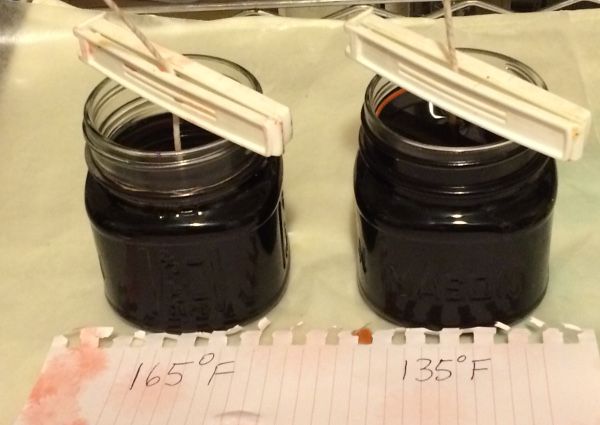Is Soy Or Paraffin Better For Wax Play?
What is wax play?
Wax play is a form of temperature play practiced in a BDSM context. It involves dripping melted wax from a candle onto a partner’s naked skin for erotic pleasure and sensory stimulation. The sensation can range from warm and tingly to more intense, depending on the type of wax used. Wax play is considered an intermediate-level BDSM activity that provides a contrast between heat from the melted wax and coolness from contact with skin (https://en.wikipedia.org/wiki/Wax_play).
Wax play allows partners to explore pain and pleasure through temperature play. The unpredictable dripping of hot wax creates anticipation and excitement. The wax can be dripped onto any area of the body, but common areas include the back, chest, arms, legs, feet, and genitals. Partners should agree on boundaries beforehand. Safety precautions like having an emergency cut-off signal are important. Overall, wax play provides unique sensations and can be an adventurous form of foreplay for couples.
Safety considerations for wax play
Wax play can be an intensely pleasurable experience, but there are some important safety considerations to keep in mind. The biggest risk with wax play is burns. According to SHA’s Guide to Wax Play, wax at the wrong temperature can cause severe burns and blistering on the skin. It’s crucial to test the wax on a small patch of skin before dripping it on any sensitive areas. Start with just a drop and wait for it to harden to ensure it’s an appropriate temperature. The inner wrists or thighs are good test spots.
Always have a safety kit on hand with items like an LED candle for sensation play without heat, aloe vera gel to soothe any minor burns, and scissors to quickly remove dried wax. Wax play veterans recommend starting slowly and building up to avoid overstimulation. Don’t try to remove hardened wax with anything sharp that could cut the skin. Take your time and enjoy wax play safely.
Pros and cons of paraffin wax
Paraffin wax has been used for over a century in a variety of applications. Some key pros and cons of paraffin wax include:
Pros
Paraffin wax has a low melting point, typically between 115-145°F (Healthline). This makes it easy to melt and work with for candle making, skin treatments, and more.
It is also relatively inexpensive compared to other waxes like beeswax or soy wax. Paraffin wax is readily available and easy to find (Slatkin & Co.).
Cons
Paraffin wax is made from petroleum, so it is not a renewable or sustainable resource. There are some concerns that burning paraffin candles releases more soot and toxins compared to natural waxes.
Some also find that it leaves an oily residue on the skin during wax treatments. People with sensitive skin may experience reactions or clogged pores.
Pros and cons of soy wax
Soy wax is a natural wax made from soybeans. Here are some of the main pros and cons of using soy wax for wax play:
Pros:
- Soy wax is all-natural and Eco-friendly. It comes from a renewable resource. [1]
- Soy wax has a lower melting point than paraffin, making it easier to remove. [2]
- Soy wax is generally affordable and cost-effective.

Cons:
- Soy wax doesn’t hold scents as well as paraffin wax.
- The quality and performance of soy wax can vary.
Overall, soy wax is a good natural option for wax play, though it may not be as strongly scented. It melts at a lower temperature than paraffin, making cleanup easier. The renewable and eco-friendly source of soy is also a major plus.
Comparing soy and paraffin waxes
When it comes to safety, soy wax has some advantages over paraffin wax. Soy wax is made from soybeans, a natural and renewable resource. Paraffin wax is made from petroleum, raising concerns about toxicity. According to one source, “Soy wax contains no known carcinogens, is non-toxic and biodegradable” (SimpleNess Collection). Soy wax is also less likely to irritate skin. However, properly refined paraffin wax should also be quite safe for skin contact.
In terms of feel and experience, soy wax adheres better to the skin, creating a smoother glide. It also melts at a slightly lower temperature than paraffin, so it may feel more comfortable against the skin. The natural scent of soy wax is milder and considered more pleasant. However, soy wax doesn’t hold scent as well as paraffin. Soy also tends to have a shorter burn time compared to an equivalent paraffin candle. Paraffin can be easier to clean up since it doesn’t leave an oily residue like soy wax. Overall, soy wax provides a more natural, skin-friendly experience, while paraffin allows for better fragrance and burn time.
How to choose the right wax
When selecting wax for play, there are a few key factors to consider such as skin sensitivity and desired sensation.
Those with more sensitive skin may want to opt for soy wax, as it has a lower melting point than paraffin wax and is less likely to burn or cause discomfort (https://sexualhealthalliance.com/nymphomedia-blog/shas-guide-to-wax-play). Paraffin wax gets hotter and creates a more intense sensation, so it may be better suited for those who enjoy a higher degree of pain or are less sensitive.
The texture and consistency of the wax also impacts sensation. Soy wax is smoother and more pliable, while paraffin is thinner when melted. Test out small amounts of different waxes on less sensitive areas first to gauge comfort levels.
Scent and essential oils can enhance the wax play experience, but avoid using candles with glitter or other additives as they can cause skin irritation. Stick with body-safe candles specifically designed for sensual play over regular decorative candles.
When in doubt, go with a high-quality soy wax made for intimate use. Soy tends to be gentler, better moisturizing, and less risky for beginners or those with sensitivity concerns (https://www.wellandgood.com/wax-play-candles/).
Using wax safely
When engaging in wax play, it’s important to take proper safety precautions. This involves preparing your space, testing temperatures, and providing aftercare.
To prepare, make sure you have a first aid kit, cool compresses, and water nearby in case of burns. Clear the area of any flammable materials. It’s also recommended to use a tarp or old sheets to protect surfaces from wax stains.
Always test the temperature of the wax before applying it to skin. Allow a small drop to fall on your inner wrist first. This will let you gauge if it’s an appropriate temperature. Start with larger body areas first before progressing to more sensitive zones. Note that hardened wax can still retain heat and cause burns if applied too quickly in succession.
Proper aftercare is crucial as well. Have olive or coconut oil on hand to remove wax residue. Avoid abrasive scrubbing. Apply aloe vera gel to soothe any irritated areas. Be prepared to provide emotional aftercare too, as wax play can bring up vulnerable feelings.
With the right precautions, wax play can be an exciting and safe form of sensory play. But be sure to research and prepare thoroughly beforehand.
Wax Play Techniques
There are a few main techniques used in wax play to create different sensations:
Dripping – This involves holding a wax candle above the body and letting drops of wax fall onto the skin. The wax can be dripped from higher up to allow it to cool a bit before hitting the body, or from close up so it lands hotter. Dripping allows you to gradually build intensity and target specific body parts.
According to Cosmopolitan, always test the wax on yourself before a partner to gauge the heat level. Start with just a drop or two to get a feel for the sensation. Dripping wax across large expanses of skin creates a prickling, stinging feeling as the wax starts to harden.
Brushing – Using a paint brush or popsicle stick, you can spread melted wax directly onto the skin. This provides fuller coverage and lets you ‘paint’ designs. Brushing warmed wax tends to feel more gentle, like a massage.
As noted by Sexual Health Alliance, wax applied this way cools faster so you can safely use larger amounts without burning. Always check in with your partner about the heat level.
You can alternate between dripping and brushing wax to create diverse sensations. The contrast of hot wax droplets followed by smoothed on wax introduces changing textures and intensities.
Enhancing the wax play experience
There are various ways to enhance the wax play experience and take it to the next level. Combining wax play with other intimate activities can create new sensations and dynamics. Some ideas include incorporating wax play into massage, oral sex, roleplay scenarios, and more. Massaging or licking warm wax off a partner’s body can be highly erotic.
Roleplaying and setting up wax play scenes can also enhance the experience. Take on dominant/submissive roles or act out fantasies to build anticipation and excitement. Use dirty talk to express desires, give commands, or tease your partner as the wax drips onto their body.
Setting the mood with low lighting, music, and costumes or props can further immerse you in the moment. Blindfolding your partner so they don’t know where the wax will land next adds thrill and suspense. Using feathers, ice cubes, sex toys, and impact play like light spanking alongside the wax introduces new sensations.
It’s all about getting creative, communicating desires openly, and combining elements that arouse you. With the right setup, wax play can become an intensely arousing experience as you and your partner feed off each other’s energy and pleasure. Discuss boundaries beforehand, check in throughout, and have fun exploring this sensual form of temperature play.
Conclusion
In summary, both soy and paraffin waxes have advantages and disadvantages for wax play. Paraffin wax melts at a lower temperature, making it easier to work with. However, it can be more irritating for sensitive skin. Soy wax is gentler, more moisturizing, and environmentally friendly, but requires higher melting points.
When choosing between the two, consider your skin sensitivity, experience level, desired intensity, and environmental impact. Test small amounts of each on your skin first to determine irritation. Follow all safety precautions, like having an emergency plan and carefully applying wax away from vital organs.
For beginners or sensitive skin, soy wax may be the better option to start. But paraffin provides higher heat sensations for advanced play. Whichever you choose, using the proper techniques will lead to an exciting, safe experience. Do your research, go slowly, and have fun discovering the pleasures of wax play!



